North Korea, one of the last bastions of free, unhindered smoking, a country where just about every adult male can and does light up almost anywhere he pleases and where leader Kim Jong Un is hardly ever seen without a lit cigarette in his hand, is now officially trying to get its people to kick the habit.
It’s a battle Pyongyang has tried before and won’t easily win, especially since, beyond some stepped-up propaganda, it doesn’t appear to have a lot of funding. But this time around, the effort does have one big thing going for it: the increasingly vocal support of North Korean women, virtually none of whom smoke.
Ri Yong Ok, a 57-year-old pharmacist whose heavy-smoking husband nearly died of lung cancer, is leading the charge.
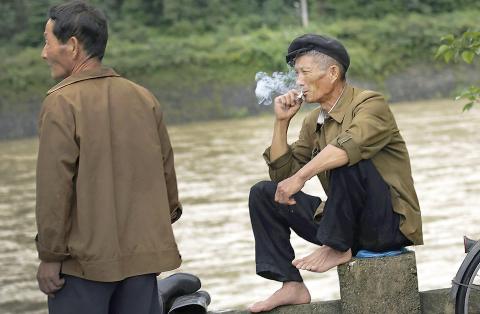
Photo: Wong Maye-E/AP
“I’ve been on TV, my whole family has been on TV, so everyone knows who I am,” Ri, flanked by no-smoking posters, told The Associated Press during an interview at the small anti-smoking center she manages in Pyongyang.
The center, one of only 11 in all of North Korea, has something you almost never see in the North — a no-smoking sign placed prominently above its entrance.
“I’m optimistic that we can get people to stop,” she said. “Our goal is education.”
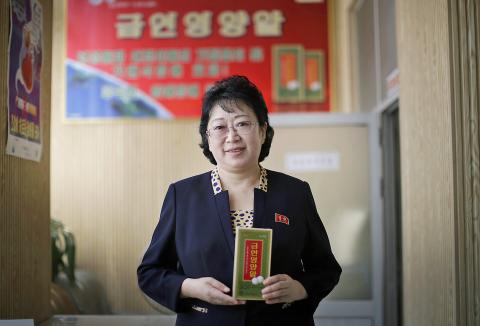
Photo: Wong Maye-E/AP
NATION OF SMOKER
The potential health benefit to the nation could be tremendous.
Ri estimated about 54 percent of adult male North Koreans smoke — a higher figure than the 43.9 percent given by a World Health Organization report released at the end of 2014. Smoking is a social taboo for women and it’s illegal for anyone under the age of 17.
North Korea has toyed with the idea of pushing harder to get smokers to kick the habit before — Ri’s humble anti-smoking center has been around since 2007. But it has stepped up its effort to at least provide more education of smoking’s health risks since an anti-smoking decree was made by Kim in April.
The start of the new drive prompted speculation in the foreign media that Kim himself had quit, since cigarettes were conspicuously missing from his hands in photos carried by the state media of his “on-the-spot guidance” visits around the country from around that time.
The buzz didn’t last long. He was pictured smoking on a visit to a children’s camp last month.
North Korea joined the World Health Organization’s Framework Convention on Tobacco Control in 2005 and dutifully holds events on World No Tobacco Day every year. The infomercial on Ri and her family was broadcast by state-run TV on that day this year and a big anti-smoking poster for “no smoking day” hangs in her offices.
According to recent government reports, the country has reduced the amount of land devoted to growing tobacco. In May, state media quoted a Health Ministry official saying the ratio of male smokers in 2013 was down 8 percent when compared with 2009 and “the number of nonsmokers is remarkably increasing with each passing day.”
“I would guess about 300 people visit smoking cessations centers a day, nationwide,” in a country with a population of about 24 million, Ri told AP.
SUPRISING VARIETY
Cigarettes are a big business in North Korea.
Unlike many other consumer products, the array of domestically produced brands that are available to the public is amazing — from the status-symbol 727s (which take their name from the anniversary of the armistice that ended the Korean War) to brands like Pyol (Star), Craven and Tazo (which means ostrich and features the bird on every pack).
Menthol cigarettes are essentially non-existent but, because of the heavy competition among makers, gimmicks abound — one kind of Pyongyang-brand cigarette has filters tipped with smiley faces. Another brand is now putting flavored balls in its filters that when popped give the smoke a vaguely fruity taste.
Prices range from around NT$160 for the 727s and NT$225 or so for the popular Japanese Seven Star brand — despite international sanctions on luxury good exports, it’s easy to obtain imported cigarettes in Pyongyang — while Ostrich and other typical domestic smokes go for US$1 or less a pack.
Some smokers roll their own blends, a practice that is more common in the countryside. Though the possibility can’t be ruled out, the sight of people puffing away on paper-rolled, odd-smelling mixtures of tobacco and whatever else they can stuff in with it may contribute to persistent but unsubstantiated reports by visitors and foreign media outlets of widespread marijuana use.
Health warnings are now required on cigarette packs, but remain inconspicuously placed in small lettering on the side of most and only state that smoking can be harmful to the health. A similar warning is posted in the smoking area at Pyongyang’s new international airport, though most smokers probably don’t see it — they just go outside.
Even so, the media campaign and pressure from wives, daughters, mothers and girlfriends does appear to be paying off, at least a little.
Yun Jin, a 27-year-old IT worker, said he made the decision to kick the habit after he saw Ri on television.
“I started smoking when I was a university student and smoke about 10 cigarettes a day,” he said before a consultation at Ri’s cessation center. “My mother wants me to quit, but it’s my decision.”
Consultations at the centers are free, in keeping with North Korea’s policy of providing free health care to its citizens. Medicines intended to help them quit are not covered, however.
Ri, being a pharmacist, has developed one such medicine. Brightly colored boxes of it — a 10-day supply of 21 lozenges goes for NT$325 a pop — cover one of the walls of her center. She boasts that, being entirely made of traditional Korean mountain herbs and medicinal plants, “it’s the best in the world.”
“There are many anti-smoking medicines around the world, but they contain nicotine, so ours is better for quitting,” she said. “But in the end, the most important thing is to really make the decision to quit.”
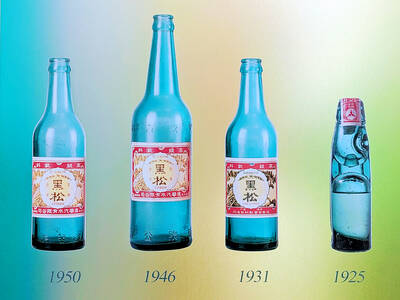
Aug. 4 to Aug. 10 When Coca-Cola finally pushed its way into Taiwan’s market in 1968, it allegedly vowed to wipe out its major domestic rival Hey Song within five years. But Hey Song, which began as a manual operation in a family cow shed in 1925, had proven its resilience, surviving numerous setbacks — including the loss of autonomy and nearly all its assets due to the Japanese colonial government’s wartime economic policy. By the 1960s, Hey Song had risen to the top of Taiwan’s beverage industry. This success was driven not only by president Chang Wen-chi’s
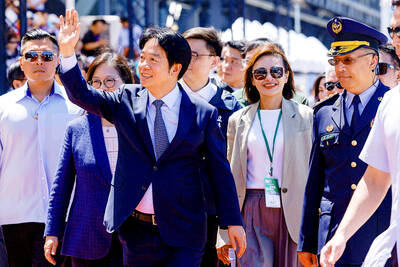
Last week, on the heels of the recall election that turned out so badly for Taiwan, came the news that US President Donald Trump had blocked the transit of President William Lai (賴清德) through the US on his way to Latin America. A few days later the international media reported that in June a scheduled visit by Minister of National Defense Wellington Koo (顧立雄) for high level meetings was canceled by the US after China’s President Xi Jinping (習近平) asked Trump to curb US engagement with Taiwan during a June phone call. The cancellation of Lai’s transit was a gaudy
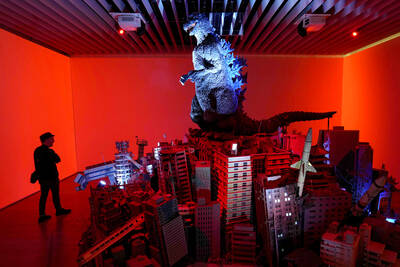
From Godzilla’s fiery atomic breath to post-apocalyptic anime and harrowing depictions of radiation sickness, the influence of the nuclear bombings of Hiroshima and Nagasaki runs deep in Japanese popular culture. In the 80 years since the World War II attacks, stories of destruction and mutation have been fused with fears around natural disasters and, more recently, the Fukushima crisis. Classic manga and anime series Astro Boy is called “Mighty Atom” in Japanese, while city-leveling explosions loom large in other titles such as Akira, Neon Genesis Evangelion and Attack on Titan. “Living through tremendous pain” and overcoming trauma is a recurrent theme in Japan’s
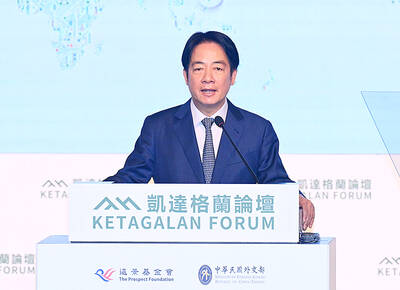
As last month dawned, the Democratic Progressive Party (DPP) was in a good position. The recall campaigns had strong momentum, polling showed many Chinese Nationalist Party (KMT) lawmakers at risk of recall and even the KMT was bracing for losing seats while facing a tsunami of voter fraud investigations. Polling pointed to some of the recalls being a lock for victory. Though in most districts the majority was against recalling their lawmaker, among voters “definitely” planning to vote, there were double-digit margins in favor of recall in at least five districts, with three districts near or above 20 percent in